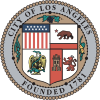| Antonio F. Coronel | |
|---|---|
 | |
| 8th California State Treasurer | |
| In office 1867–1871 | |
| Governor | Henry H. Haight |
| Preceded by | Romualdo Pacheco |
| Succeeded by | Ferdinand Baehr |
| 4th Mayor of Los Angeles | |
| In office May 3, 1853 – May 4, 1854 | |
| Preceded by | John G. Nichols |
| Succeeded by | Stephen Clark Foster |
| 1st Los Angeles County Assessor | |
| In office 1850–1856 | |
| Succeeded by | Juan María Sepúlveda |
| Personal details | |
| Born | October 21, 1817 Mexico City, Viceroyalty of New Spain |
| Died | April 17, 1894 (1894-04-18) (aged 76) Los Angeles, California |
| Spouse | Mariana W. de Coronel |
Don Antonio Francisco Coronel (October 21, 1817 – April 17, 1894) was a Californio politician and ranchero who was Mayor of Los Angeles and California State Treasurer. Coronel was considered one of the first preservationists in Los Angeles, and his private collection formed the basis of the Natural History Museum of Los Angeles County.
Career

Antonio Francisco Coronel was the son of Ygnacio Coronel, born in Mexico City in the last years of colonial New Spain. Coronel was 17 years of age when he came to Alta California with his parents in 1834, as a part of the Híjar-Padrés Colony.
In 1838, he was appointed Assistant Secretary of Tribunals for the Pueblo de Los Ángeles. In 1843, he became Justice of the Peace (Juez de Paz, the equivalent of Mayor at that time). During the Mexican–American War in 1846–47, Antonio was a captain and sergeant-at-arms in the Mexican artillery and took part in military operations against the United States.
Once the war had ended, Antonio Coronel was the first Los Angeles County Assessor from 1850 to 1856. In 1853, Coronel became Mayor of Los Angeles. Coronel was a ward councilman on the Los Angeles Common Council (1854–1867)
He was the California State Treasurer from 1867 to 1871. In 1873, Coronel married Mariana Williamson.
Coronel collected indigenous artifacts from California and Mexico, and mission-era relics. After his death his widow donated them to the Chamber of Commerce which put them on display in an exhibit of Californiana in their downtown headquarters. Coronel's donated collection made the basis for the Natural History Museum of Los Angeles County. Antonio Coronel became the owner of Rancho Los Feliz.
Personal life

He was married to Mariana W. de Coronel.
His brother, Manuel F. Coronel, was the first Zanjero of Los Angeles. He had a sister, Maria Antonio Coronel, who married Alexis Godey in 1863.
Further reading
- Coronel, Antonio; edited by Doyce B. Nunis, Jr. (1994). "Tales of Mexican California." Bellerophon Books, 122 Helena St., Santa Barbara, CA 93101.
References
- LA Magazine - Becoming Los Angeles
- "Antonio de Coronel". Archived from the original on 2015-09-09. Retrieved 2009-04-09.
- genealogy.com Jose Ygnacio Franco Coronel
- Chronological Record of Los Angeles City Officials: 1850–1938, Compiled under Direction of Municipal Reference Library City Hall, Los Angeles March 1938 (Reprinted 1966)
- Schmal, John P. The Four Latino Mayors of Los Angeles Archived 2007-09-01 at the Wayback Machine HispanicVista, May 23, 2005
- Stargel, Cory; Stargel, Sarah (2008). Early Los Angeles County Attractions. Arcadia Publishing. ISBN 978-0-7385-5928-5.
- "Antonio de Coronel". Archived from the original on 2015-09-09. Retrieved 2009-04-09.
- Antonio Coronel
- Alexis Godey, by Walt Wheelock, June 1965
| Political offices | ||
|---|---|---|
| Preceded byRomualdo Pacheco | State Treasurer of California 1867–1871 |
Succeeded byFerdinand Baehr |
| Treasurers of California | ||
|---|---|---|
 | ||
- Mayors of Los Angeles
- 1817 births
- 1894 deaths
- Los Angeles Common Council (1850–1889) members
- 19th-century mayors of places in California
- Mexican military personnel of the Mexican–American War
- State treasurers of California
- Hispanic and Latino American mayors in California
- American politicians of Mexican descent
- Hispanic and Latino American people in California politics
- People of Alta California

